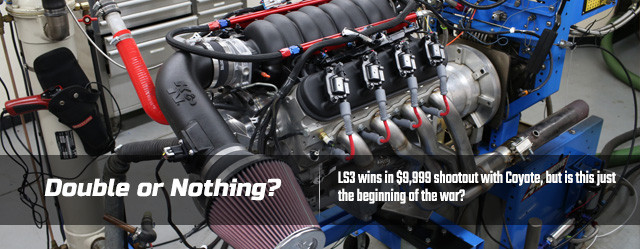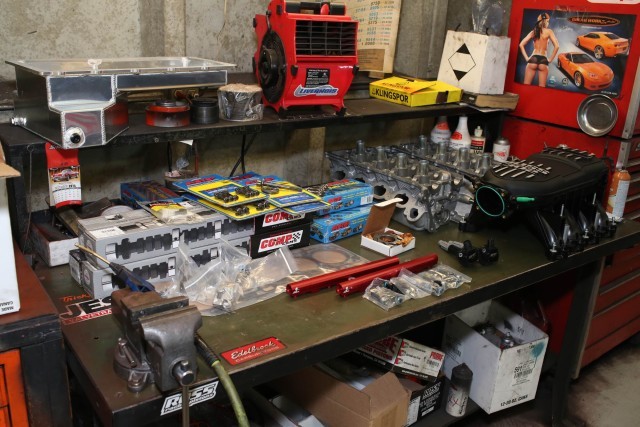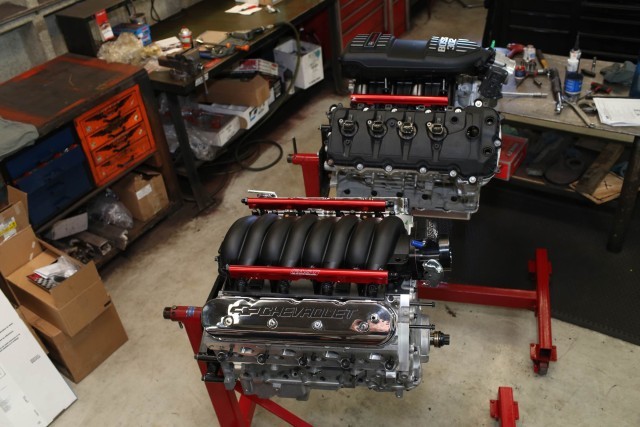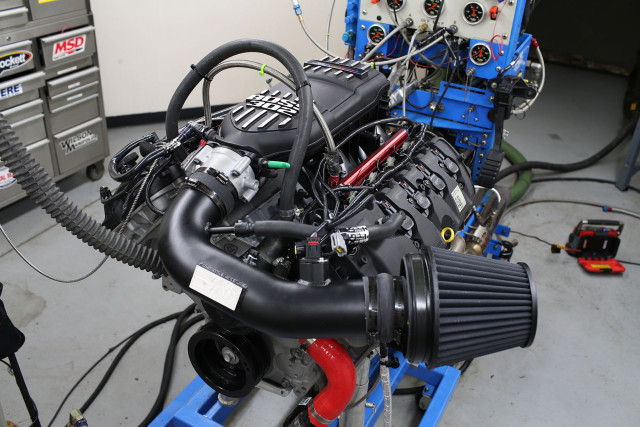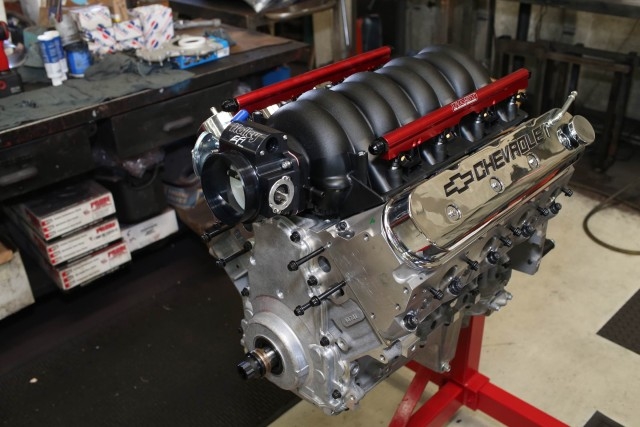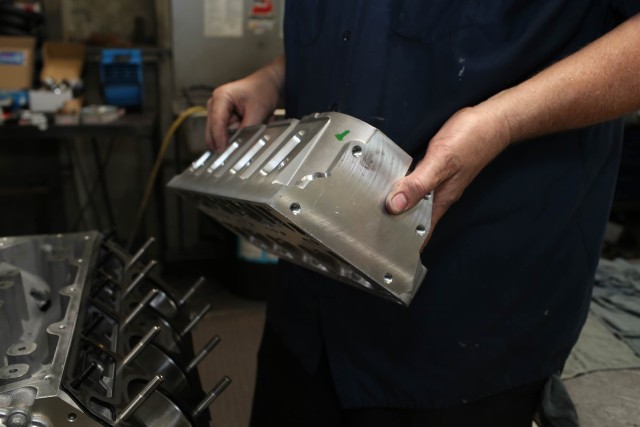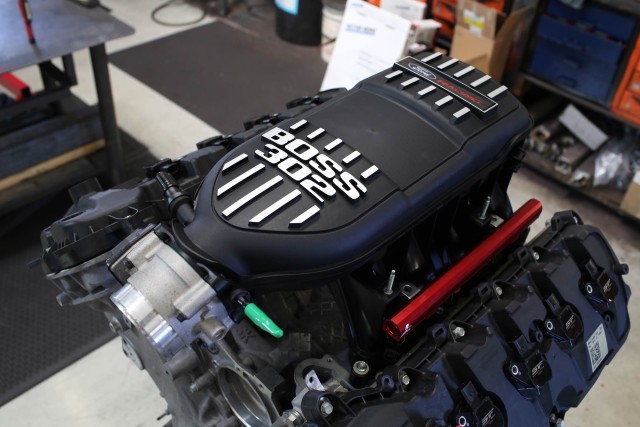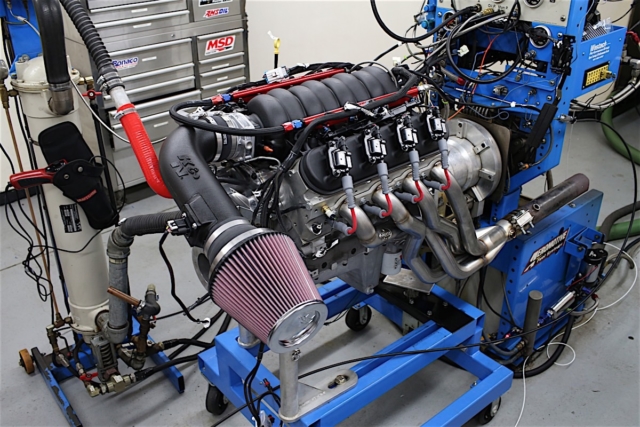Hey Coyote guys, we know that it was a tough loss recently in the LS3 vs. Coyote $9,999 budget shootout. But rest assured that we will always do the honorable thing and deflect the blame (credit?!) to EngineLabs, our sister magazine that actually conducted the build and testing— so we think it’s fair to lose the bias-based theories. But can we all agree that we learned a few things? For example, we learned that Yolo Douchebag can upload one hell of a ghost cam tune.
Check out the Yolo video here.
We also learned that us LS guys should be grateful for how cheap our parts are and the abundance of cheap LS-powered vehicles. We also know that the Coyote is an amazing engine, it just didn’t end up on top for this test.
No matter what, there will always be things in any test that die-hard Chevy and Ford fans are never going to agree on; such as what parts make a superior motor and what types of engine oils taste best— but I digress. We over here at LSX Magazine felt like the test was done as impartially as possible— however that is extremely easy to say in victory, just ask Lebron James.
Whether you agree with that may or may not hinge on how badly your LS friends ridiculed you after the outcome, and how many times you had to use the phrase “but it made more power per cubic inch!” But no matter what, the test was supposed to be a demonstration of what both of these great motors are capable of with a $10K budget that would be similar to what the average wrench-turner would build in their own garage.
So let’s take a look at your gripes one by one.
Argument 1: Forged Parts Were a Waste on the Coyote!
Both engines used upgraded rods. However, new pistons were absolutely necessary on the Coyote as the truck engine (F-150) has lower compression. The LS and the Coyote were either put together from scratch, or rebuilt—utilizing forged parts—to ensure an even starting point for both. If you complain about the rods used in the Coyote, you’ve got the same going in the LS. Sure, the money could have been saved from changing the internals and put toward head work and a Cobra Jet intake–although it wouldn’t get you very far toward those goals due to price–on the Coyote, but then people would be complaining that the LS3’s internals were changed but not the Coyote’s. However, this is also a double standard. Had the same thing been done to the LS— bypassing forged internals so that money could be spent elsewhere— it would have shown some power gains, too. Not only that, but LS fans everywhere could have said the same about a couple of the budget-minded components that were selected for the LS3.
The reason forged internals were chosen was because, as the test states, “rather than just throw any combination of parts available at these mills, we wanted to take a real-world approach that replicates the kind of build you might take on in your own garage.” The thought here being that if you were rebuilding either of these mills with performance in mind, there is a good chance that you would most likely spring for some forged internals, if not only just for durabilities’ sake, then with future mods in mind. In fact, more of the budget was spent on the LS3’s rotating assembly than the Coyote’s, since it retained its stock forged crank.
Argument 2: Why not Run More Compression in the Coyote
Both engines were limited to similar compressions ratios as part of the rule set— which had to be increased in the Coyote’s case to even come in at non-truck specifications— which meant the pistons had to be changed regardless. The build went one step further and changed the connecting rods at the same time, which, might we add, happened in the LS3 as well. It wasn’t as if they spent a ton on unnecessary parts for the Coyote while the LS3 retained its stock internals and had money spent elsewhere on it—we are equal opportunity around here.
“The F150 uses a lower quality piston with lower compression; rather than sacrifice ring seal, and potentially horsepower, from using a used engine, the pistons were swapped out,” said Mark Gearhart, LS3 Vs. Coyote shootout project manager. “No one in the world is going to put new pistons on a stock, used rod. Plus, the LS3 had a built bottom end too, so we wanted to make it fair.”
Argument 3: Skip the Oil Pump Gears and Rods
Maybe there was a legit argument on the oil pump gears. We agree that the money could have been invested elsewhere and probably gotten reasonable durability out of the factory gears– maybe. However, there are cases of these engines breaking gears in drag racing applications on 100 percent stock engines. Yes, the extra stress from a supercharger does aid in these gears failing, but it’s more from the shock of a launch at the dragstrip than anything else that will break them.
The only practical parts that would have made the engine better would be a CJ manifold, throttle body and intake, which was tested later that day and made 531.2 hp – 20.7 horsepower more than the Boss intake, stock throttle body and K&N.– Mark Gearhart.
“We added the oil pump gears because the motor was going to approach 8,000 rpm, and rpm kills those gears too, not just horsepower,” Gearhart said. “Plus, it’s a $300 piece of insurance.”
Let’s say they did skip the gears and the rods — so what would be done with the extra coin? Even with a Cobra Jet intake manifold and Ford Racing throttle body, we still think the Coyote would have come up short. We have serious doubts that alone would make up for a 40-horsepower and 100-lb-ft-of-torque difference. And in fact, it didn’t.
“The only practical parts that would have made the engine better would be a CJ manifold, throttle body and intake, which was tested later that day and made 531.2 hp – 20.7 horsepower more than the Boss intake, stock throttle body and K&N,” Gearhart said. “Even with that, the Coyote still made less power.”
And there you have it, straight from the horse’s mouth. Not only did the Coyote not make more power with the improvements everyone was clamoring for, it made us reveal the results of a follow up article before it was ready. We didn’t want to ruin another story, but there it is– tell your friends.
Argument 4: Why Not Port the Coyote Heads?
Too expensive. When it came to the heads and cam(s), the LS3 received a set of CNC-ported pieces from Chevrolet Performance, not only because they flow better and make more horsepower, but because they only cost roughly $150 more than a stock set, which meant they fell well inside the budget. CNC porting on Coyote heads, plus larger valves, a Cobra Jet intake, and throttle body would not have offset the investment in the connecting rods and oil pump gears, pushing us outside the $9,999 budget. Even CNC porting with the stock valves would still be $2,000-$4,000 from a reputable shop; Boss 302 heads would have been $3,000, and the GT350 heads weren’t available when we started this test.
Argument 5: Feeling Displaced – why not use the 6.2L Ford?
Many were confused why a 5.0-liter V8 was pitted against a 6.2-liter, instead of a 4.8 or 5.3. The answer to this is simple, both come in cars that enthusiasts are getting there hands on as we speak. Whether the General uses more displacement to make more power is irrelevant, the 5.0 Coyote and the 6.2L LS3 are the engines that are being purchased and used, and frankly – it’s what is in the Mustang and Camaro. Both cars were born that way and that is why the engines went toe to toe, because they are out there doing it on the track every day. There are few lamer excuses for losing a race than saying “yeah well your motor is bigger than mine, but mine still makes more power per liter.” It doesn’t matter, you still lost.
Argument 6: The Tuner was Biased
Ryne Cunningham is the owner of Cunningham Motorsports – a leading tuning shop that does both 5.0 Coyote and LS engines. It’s true that Ryne has a larger client base in LS, but he worked with Westech Performance, a leading dyno shop that does hundreds of magazine specific-tests a year, hand-in-hand to get the most power out of both engines.
The test was far from biased, as many in our very own camp wanted the Coyote to win.
“Trust me, I wanted the Coyote to win because I am a hardcore Coyote/Ford fan, but it wasn’t in the cards, all things considered,” Gearhart said. “That’s also the thing about tests, everyone has their own opinion on how to spend the money.”
Another Shot At The Title – Boosted vs. an LT1?
If the Coyote got ported heads in addition to the Cobra Jet intake, and a throttle body, could it have made up the 40 hp delta? Possibly. Could it be done under budget? We don’t think it can be.
So…what if we gave the Coyote another shot at the crown? What if this time around we modified the engine for boost, upgraded it, and pitted it in a shootout against the latest in GM’s engine family – the LT1. Boosted LT1 vs. boosted Coyote. What would happen? We’d have to pick a budget range and perhaps a new builder to keep things fresh.
Let us know in the comments what parts you would like to see us use this time around. And if Yolo Douchebag wants to step up and play along with us in our new budget builds in a three-way shootout, we’d love to have the company. We’d like to see what he can actually build and tune instead of just making videos!
One thing is for sure though, we haven’t seen a topics so divisive since Donald Trump announced that he was going to run for president. Although, the White House probably could use an LS swap; it would run a lot better. LS for president 2016!



